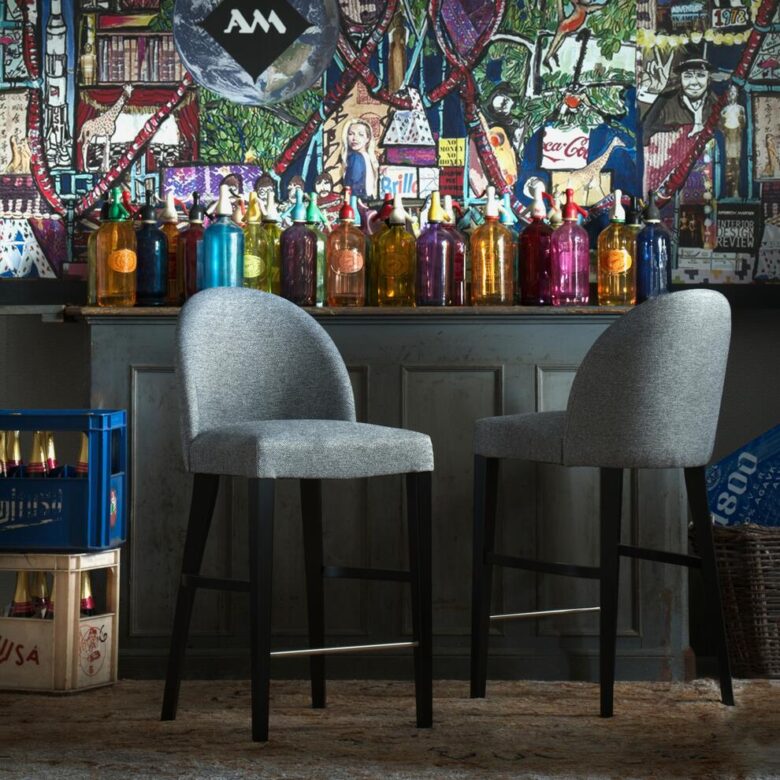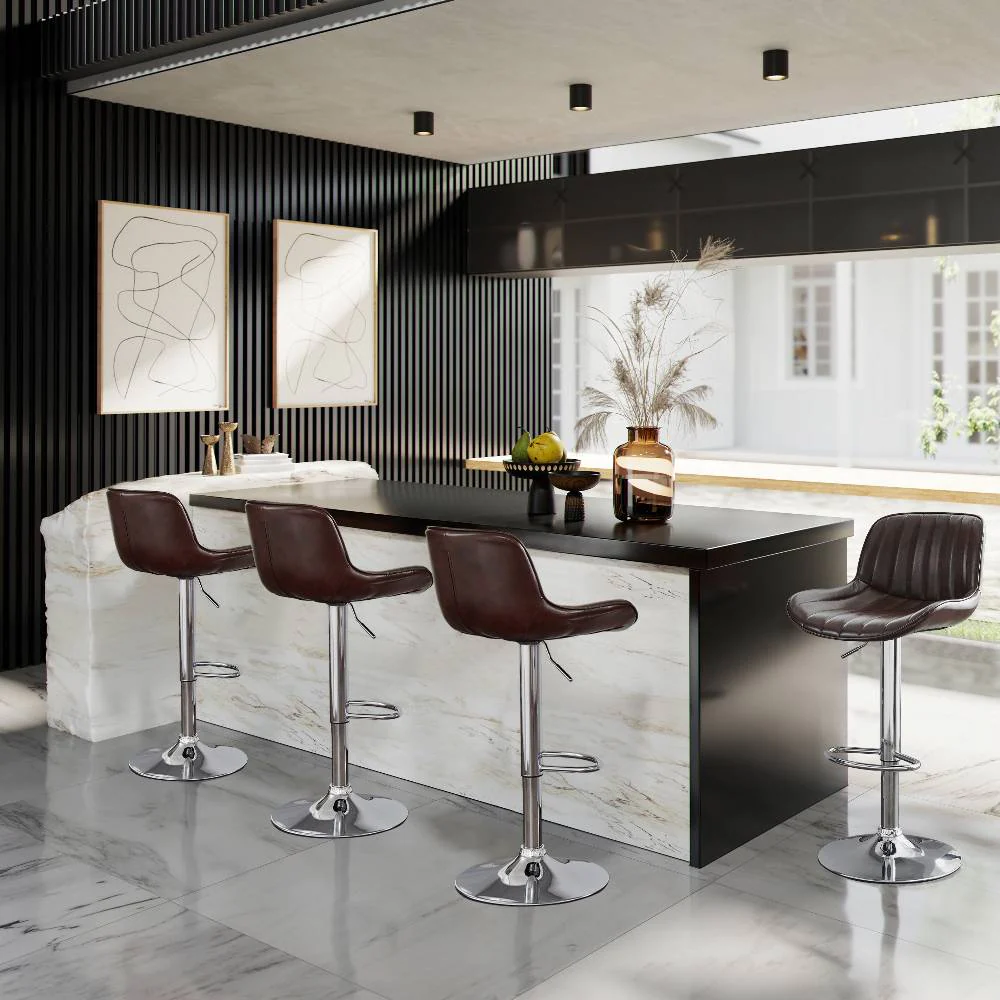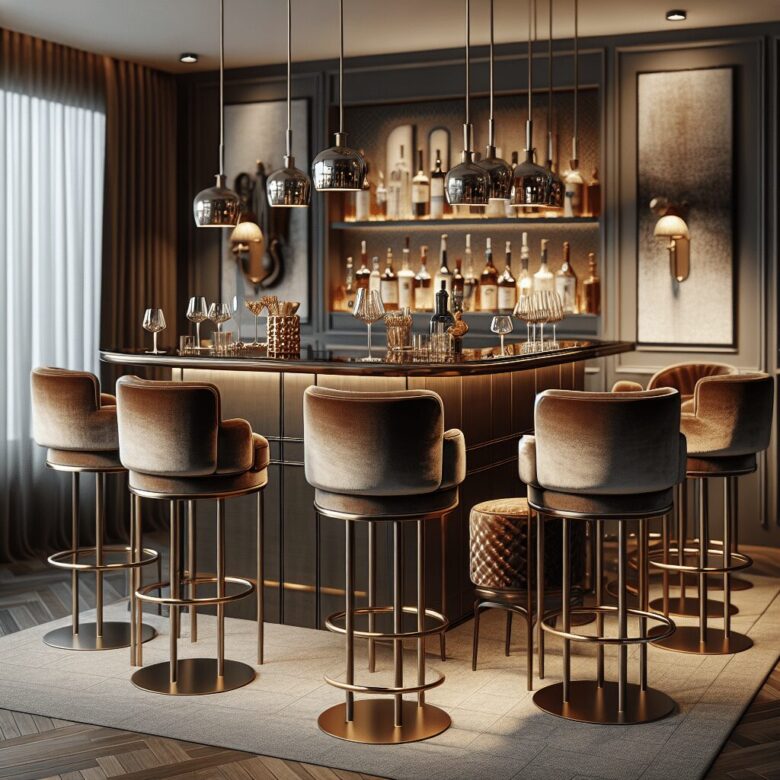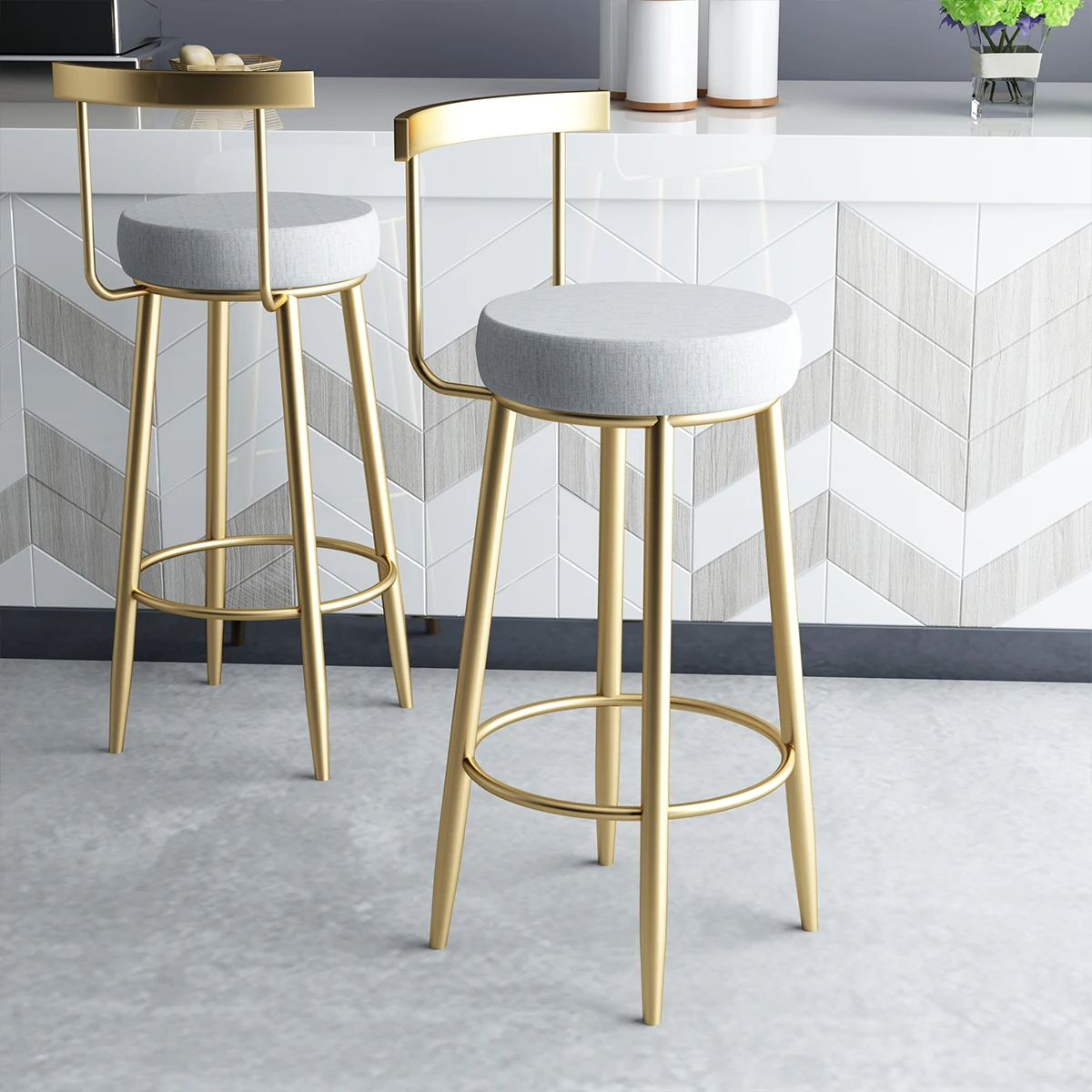Every component in the world of restaurant design adds to the atmosphere and overall experience. Barstools are a unique category of them. They are essential in determining the design, comfort, and usefulness of the bar or high-top seating section of your business. They are more than just useful furniture. It’s important to carefully evaluate a number of elements while selecting the ideal barstool, such as budget, comfort, durability, and aesthetics.
We explore the nuances of choosing the perfect restaurant bar stools for your restaurant in this in-depth guide, making sure they complement your design and improve the entire dining experience.
Understanding the Importance of Bar Stool

Source: andrewmartin.co.uk
The significance of barstools in a restaurant setting is varied. They not only offer sitting options for those who like raised surfaces like bars or high tables, but they also make a big aesthetic and atmospheric statement in the room. This is why choosing the correct barstools is so important:
Aesthetic Appeal: A restaurant’s visual appeal is enhanced by the conspicuous design components of barstools. They can provide a unified look throughout the room, improve the ambiance, and go well with the decor motif.
Barstools play a crucial role in enhancing a restaurant’s visual appeal, serving as prominent design elements that unify the space and complement the decor motif. Their carefully chosen design can contribute to a cohesive and inviting ambiance, whether through matching upholstery, materials, or style. By integrating stylish and functional barstools, restaurants can elevate the overall aesthetic and create a cohesive look that enhances the dining experience for patrons.
Comfort: Offering comfortable seats is crucial to making sure that customers enjoy their meals and remain longer in your restaurant. Barstools should be built ergonomically to offer sufficient comfort and support, luring visitors to stay and come again.
Providing comfortable seating is essential for ensuring customer satisfaction and encouraging longer stays in your restaurant. Barstools should be designed ergonomically to offer adequate comfort and support, enticing visitors to linger and return for future visits. By prioritizing comfort in the design of barstools, restaurants can create a welcoming and enjoyable dining experience that leaves a positive impression on patrons and encourages repeat business.

Source: artleon.com
Space Optimisation: Barstools provide a useful seating option in areas with limited space, including bars and cafes. Their small size permits effective space utilization without sacrificing functionality.
Barstools offer a practical seating solution in areas with limited space, such as bars and cafes. Their compact size allows for efficient space utilization without compromising on functionality. By incorporating barstools, establishments can maximize seating capacity and accommodate more patrons, enhancing the overall efficiency and versatility of the space. This makes barstools an invaluable asset for businesses seeking to optimize their layout and provide comfortable seating options within confined areas.
Brand Identity: Your restaurant’s personality and identity can be communicated through barstools. Choosing barstools that complement your business image will help you attract the right kind of customers and reinforce your message, regardless of the type of atmosphere you’re going for—casual, elegant, or eclectic.
Selecting barstools that align with your restaurant’s personality and identity is essential for conveying your brand message effectively. Whether aiming for a casual, elegant, or eclectic atmosphere, the design of your barstools can play a significant role in attracting the right customers and reinforcing your establishment’s image. By choosing barstools that complement your business’s overall aesthetic and ambiance, you can create a cohesive and inviting environment that resonates with your target audience and enhances the overall dining experience.
Factors to Consider When Choosing Barstool

Source: checkcharm.com
In order to choose the ideal barstools for your restaurant, you must carefully consider a number of criteria to make sure they satisfy both your functional and aesthetic needs. The following are the most important things to remember:
Style and Design: Your barstools’ design should complement your restaurant’s general theme and décor. Make sure the barstools blend well with the existing furniture, carpeting, and lighting, regardless of whether you choose sleek, modern, rustic farmhouse or traditional elegance designs.
It’s essential for the design of your barstools to harmonize with the overall theme and decor of your restaurant. Whether you opt for sleek and modern, rustic farmhouse, or traditional elegance designs, the barstools should complement existing furniture, carpeting, and lighting. This cohesive approach ensures that every element in your restaurant contributes to the desired atmosphere and enhances the overall dining experience for your patrons. Whether blending seamlessly with contemporary aesthetics or adding rustic charm, carefully selecting barstools that align with your restaurant’s theme will create a cohesive and inviting ambiance.
Material and Construction: Wood, metal, plastic, and upholstery are just a few of the materials that can be used to make barstools. Take each material option’s strength, upkeep needs, and aesthetic appeal into account. For example, metal barstools offer industrial charm and sleekness, while hardwood barstools radiate warmth and genuineness.

Source: aliexpress.com
Size and Height: The height of your barstools should match the height of the high tables or bars they go with. While counter heights normally range from 34 to 36 inches, standard bar heights typically range from 40 to 42 inches. Make sure that guests have enough legroom and a suitable seating height on the barstools.
Ergonomics and Comfort: When choosing barstools for your restaurant, comfort is crucial. Select styles that offer sufficient footrests, seat padding, and back support so that visitors can sit comfortably for lengthy periods. Check the barstools’ ergonomics for yourself to see if your customers will find them comfortable.
Durability and Maintenance: Due to regular use and spills, restaurant furniture needs to be both easy to maintain and durable. Select barstools that are made of sturdy materials that are easy to clean and maintain and can tolerate high usage. For lifespan, take into account additional elements like stain repellency and scratch resistance.
Flexibility and Versatility: Adaptable barstools that can be adjusted to different seating arrangements and layouts provide more flexibility in order to accommodate a range of group sizes and guest preferences. Barstools that are stackable or foldable come in handy in situations when there are varying seating needs or little storage space.
Budget Restrictions: When purchasing barstools, set a reasonable price range and take into account variables like number, quality, and customizability. Strike a balance between your requirement for strong, eye-catching barstools that live up to your brand’s standards, your customers’ expectations, and your financial limitations.
